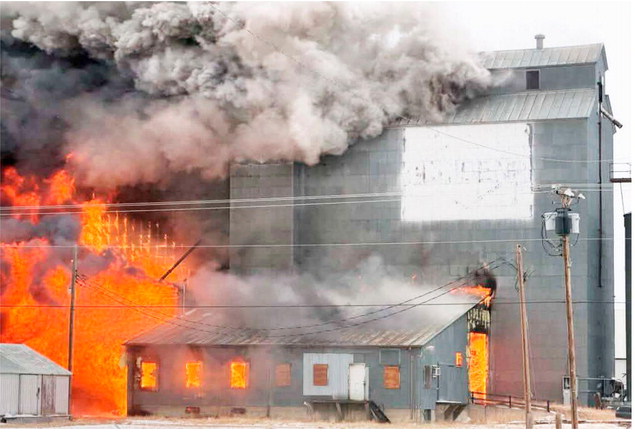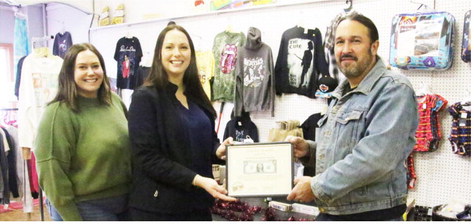Montana’s Plan To Curb Opioid Overdoses
Before she stopped using drugs for good, Cierra Coon estimates that she overdosed eight times in a span of two weeks in the fall of 2022. One of those times, the opioid overdose reversal drug naloxone helped save her life.
She was riding in a car on the back roads of the Flathead Indian Reservation when she lost consciousness. Someone in the car grabbed a small bottle of naloxone, sprayed it up her nose, and performed CPR until she came to. Coon said having quick access to the overdose reversal agent, also known by the brand name Narcan, was incredibly lucky.
“The times I wasn’t administered naloxone, it’s a miracle that I made it out,” Coon said. “People brought me back by shocking me with cold water and doing CPR. But that’s not a for-sure ‘I’m going to bring you back to life,’” Coon said.
Nearly two years later, Coon is a recovery coach for a local program, Never Alone Recovery Support Services, and earning a degree as an addiction counselor from Salish Kootenai College. She keeps doses of naloxone in her car in case she needs to help other people.
But, she said, she worries about the drug’s lack of accessibility, particularly in rural areas like her own. The state and tribal health departments’ distribution pipeline has been inconsistent, and the $50 price tag for a twodose package of naloxone at the nearest Walmart puts it out of reach for many people.
“How are we supposed to afford this drug that’s ultimately to save the lives of ourselves and those around us?” she said.
Montana health officials are considering a new strategy to make naloxone more accessible. Drawing on a pool of behavioral health funds set aside by lawmakers in 2023, health officials within Gov. Greg Gianforte’s administration have proposed installing two dozen naloxone and fentanyl testing strip vending machines around the state at behavioral health drop-in centers and service locations for homeless people.
The $400,000 plan to build, stock and maintain 24 vending machines for a year has not yet been approved by the governor, a Republican running for a second term, who ultimately decides how the funds allocated to the Behavioral Health System for Future Generations Commission are spent.
Details from the state’s Department of Public Health and Human Services about where the machines would be located and how they would be operated remain scarce.
The opioid-related death rate has tripled in Montana in recent years, from 3.6 deaths per 100,000 residents in 2017 to 11.3 per 100,000 residents in 2023. The death rate is higher among Native Americans: Native people in Montana died of opioid overdoses at a rate of 33 deaths per 100,000 people in 2023 — more than three times the rate for white people.
Naloxone has emerged as an important tool to combat opioid overdoses. When administered quickly, it attaches to receptors in the brain targeted by opioids, blocking the drugs’ effects.
Across the U.S., vending machines that distribute naloxone and other health supplies free of charge are becoming front-line features of the battle against opioid overdoses. Different versions of the model are being tried in at least 33 states.
In a 2023 report, the National Council for Mental Wellbeing described the use of vending machines to distribute naloxone and other “harm reduction” supplies — first-aid kits, pregnancy tests, sterile syringes, and more — as a public health tool that became more widespread during the social distancing era of the COVID-19 pandemic. But the popularity of the strategy has continued to grow since, especially in places with hard-to-reach populations.
“They provide services to [people who use drugs] with far fewer barriers than fixed-site programs and even mobile outreach,” the report stated. Harm-reduction vending machines, it continued, “may also provide greater privacy and anonymity.”
The proposal from the state health department would be the first instance in Montana of vending machines being funded directly by the state, as opposed to the few now funded through public grants or private philanthropy.
Jami Hansen, prevention bureau chief for the state health department’s Behavioral Health and Developmental Disabilities Division, spoke about the proposal during a May meeting of the state behavioral health commission. She framed vending machines as a targeted way to fill gaps in a sparsely populated state that doesn’t offer consistent access to addiction treatment and naloxone.
“Having something available that they could utilize themselves would be very, very beneficial,” Hansen said.
Some local public health groups in Montana — including those in Missoula, Helena, Kalispell, and Big Horn County — have already begun using vending machines to distribute free naloxone, drug testing strips, and other health care supplies. In Helena, three machines purchased by Lewis and Clark County have been distributing free Narcan nasal spray and safe drug disposal pouches — used to dissolve prescription and recreational pills — for more than a year.

